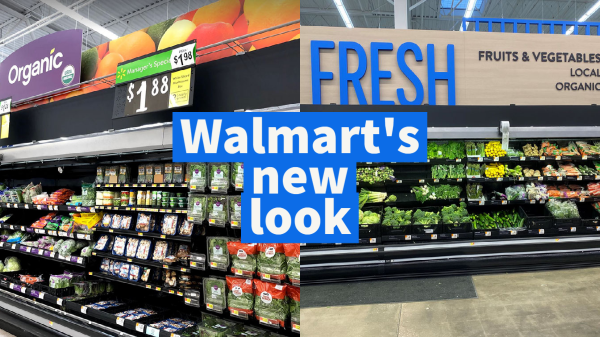One of the many highlights of my professional career has been interacting with the founders, CEOs, presidents, and senior management of suppliers who did business with Walmart.
David Albertson, John Andersen, Rick Antle, Looe Baker, Karen Caplan, Paul DiMare, Dan Duda, Sarah Frey, Joe Hernandez, Steve Martori, Jack Pandol, Jim Steele, and Albert Wada were just a few of the incredible individuals I’ve had the opportunity to learn from.
Most of the conversations during meetings with these individuals had very little to do with the transactional aspects of business, but rather the challenges experienced in producing and distributing their products, and the consumer insight gained from marketing them for many seasons.
The influence these leaders had on my understanding and the perspectives I developed in the fresh produce industry molded many of the decisions I made throughout my career. It was an education I could not have received in any other way.
Let me share one of these perspectives. Chiquita had always been a fascinating company to me; it had one of the top 10 brands of all consumer products and an amazing management team.
Yos Stallenhof was CEO at the time and had a diverse team of leaders with experience in banana production and CPG products in general. Yos had been a former executive at M&M Mars Company and had amazing insights into consumer behavior.
He, his management team, myself, and my senior group spent a great deal of time developing Walmart’s banana program. We discussed everything from fixtures and location to shipping and promotion, as well as quality standards.
But the most fascinating discussions were about color. As you can imagine, Chiquita had tremendous research on consumer purchase behavior in response to color. But here’s the amazing thing: the color itself wasn’t as important as being able to get that same color every time.
It wasn’t so much about what our merchandising scheme was, but did we offer it consistently? Ultimately, we decided on a 3.5 stage standard at retail—which meant having a 3.5 stage color banana (half green, half yellow) on display 97.5 percent of the time. We even put together a team to measure it.
Bananas became the #1 selling item—in the entire store—of Walmart’s supercenters.
The biggest challenge facing the produce industry today is, in fact, consistency.
In stock items at stores have become horrifically inconsistent. There are many reasons for this, at both the production and retail levels, but it is nonetheless true.
Because of this deterioration, buyers and stores face “a hope and a prayer” when it comes to stocking shelves. It’s similar to the Forrest Gump quote about life being like a box of chocolates, and never knowing what you’re going to get.
When you then consider that store pickers for online orders have very little knowledge about selecting fresh fruits and vegetables, it’s really a crapshoot as to what online shoppers may receive—which, in turn, will have serious ramifications about future consumption of fresh produce.
This is not just a retail issue. For too long, suppliers have shipped inconsistent quality product to retail customers, often blaming Mother Nature.
Filling in purchase orders has also been a component of supplier scorecards. But now, perhaps more than ever before, consistency will have the biggest impact on the growth, or decline, of the produce industry.
It’s never been more important for buyers and sellers to have meaningful conversations about how to consistently provide consumers with flavorful, high-quality fruits and vegetables regardless of the channel being used to select and receive these products.
Remember, the most important aspect of your merchandising plan is whether you can execute it consistently. Your future success depends on it.
This is the Retail Reflections analysis from the November/December 2021 issue of Produce Blueprints Magazine. Click here to read the whole issue.



